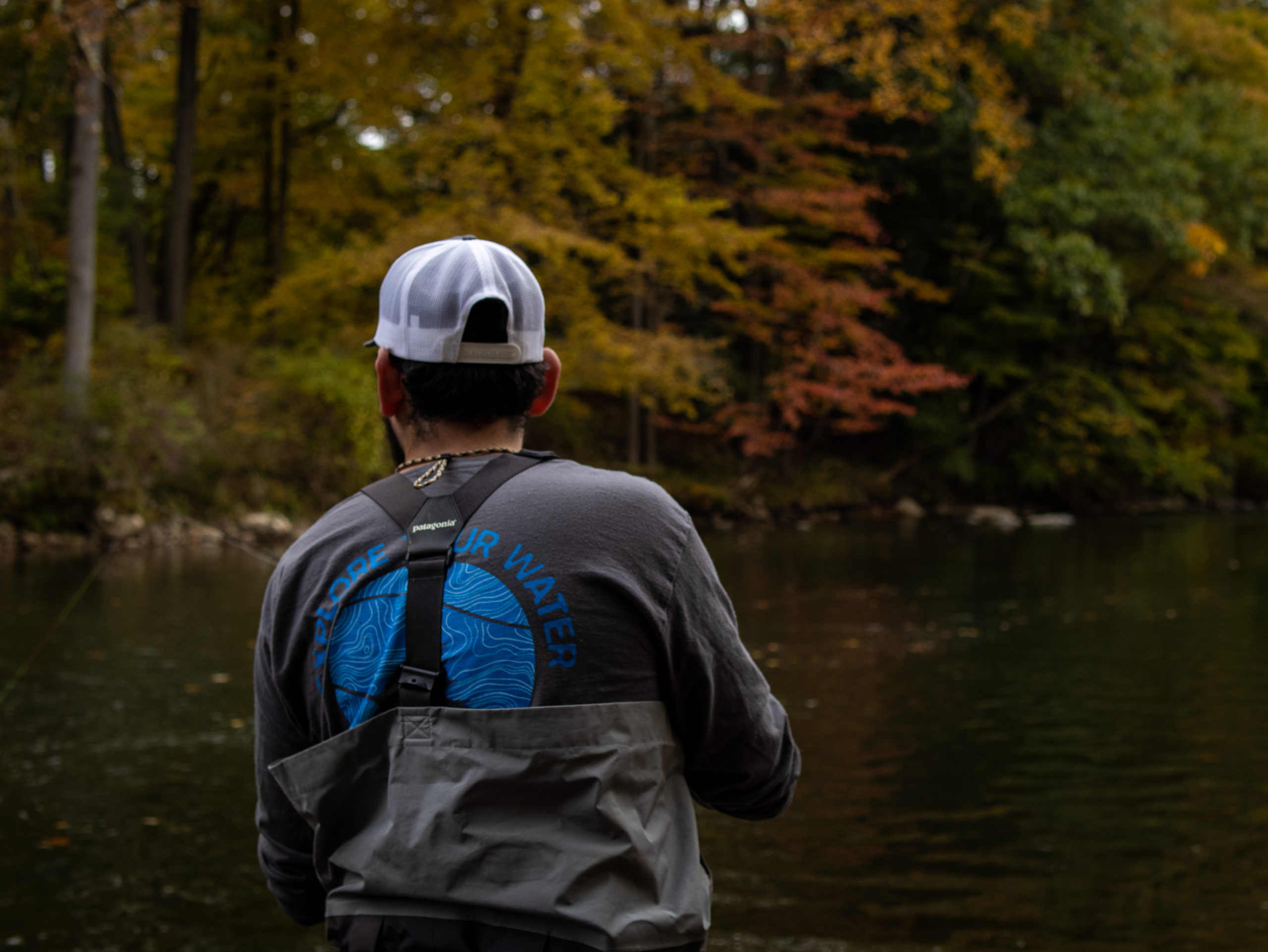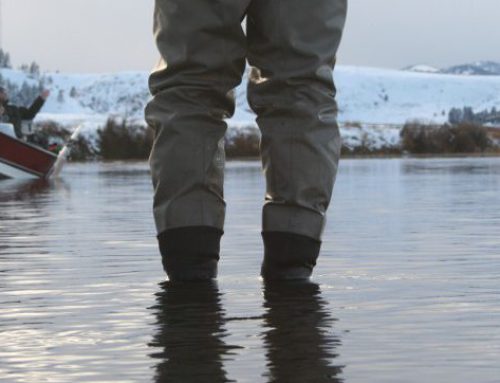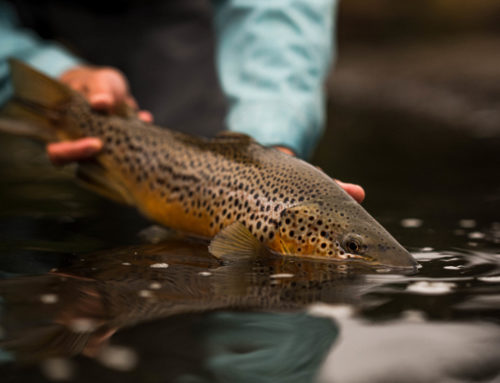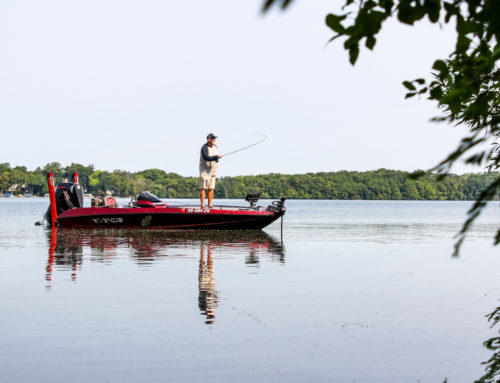Depending on who you ask, fall is the best time of the year to chase trout. Browns and brookies are preparing to spawn, their colors are as vibrant as they’ll get, and they are packing on the pounds for winter. As the leaves change, so does trout behavior, and the fish get greedy, hungry, and territorial. Here are three top tips for fall fishing so you can make the most of the season.
Get Aggressive
Streamer anglers covet fall for one reason: brown and brook trout are aggressively feeding more than any other season. In turn, your fishing should become aggressive as well. Break out the seven weight, grab your biggest streamer box, and get on the hunt. The easiest way to get into this game is to cast up and across the water, and strip-in fly line as the fly drifts downstream. You want that streamer to get right in the grill of the fish, and a entice a bite.
A few of our favorite fly patterns that do just that are the Circus Peanut, Swim Coach, and Kamikaze Sculpin. Fish at a steady pace, move often, and stay focused. If a pool or run doesn’t produce in a few minutes, change flies or move on to a different section. This is the time of year to cover ground and chase that trophy-sized fish.
Go Deep
As water temperatures drop, trout begin to venture back to deeper water. In these depths they can feed while expending less energy, gaining valuable calories for the winter. This is the time get your flies down by adding splitshot or tungsten weight. This will get your flies down quickly. A great rig this time of year is a tungsten head Woolly Bugger, and a light nymph such as the Blow Torch as your dropper. You want more weight this time of year to keep your flies in the strike zone longer, and general patterns like these are regularly taken by fish, big and small.
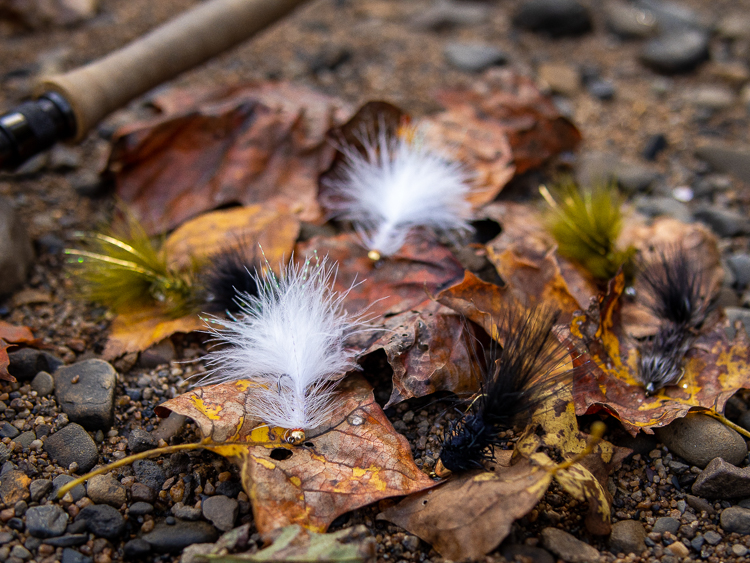
In the fall, never leave home without a variety of woolly buggers in different colors, weights, and sizes.
When you’re in the streamer game, use flies with different levels of buoyancy to see how fish respond. Some days they will be more aggressive, and other times you’ll need flies that tap them on the nose. It’s a finicky game working to constantly add and take off weight, but it’s what you have to do in the fall. And when you find that perfect combo, you’ll be in for a hell of a day.
Fish when the light is low or if the weather is poor
Fish often prefer low light conditions. In the fall, if you fish at dawn or dusk, or even on an overcast day, you are likely to find more success. The morning and evening forays may or may not be an option for you, but definitely try to get out and fish on any bad weather days.
If a cool weather pattern with rain or clouds arrives, try to get on the water. If you get an hour after work to hit the water before sunset, fish it. Any chance you get to fish in dark conditions, take advantage of it, because fish will most likely be feeding. And they are likely to be the bigger ones. This is also the time to mix up the colors of your flies. If it’s dark out, begin with black, olive or purple, then switch to brighter colors if not successful. Contrast is a big factor to consider in these conditions, and dark flies can be more obvious below the surface.
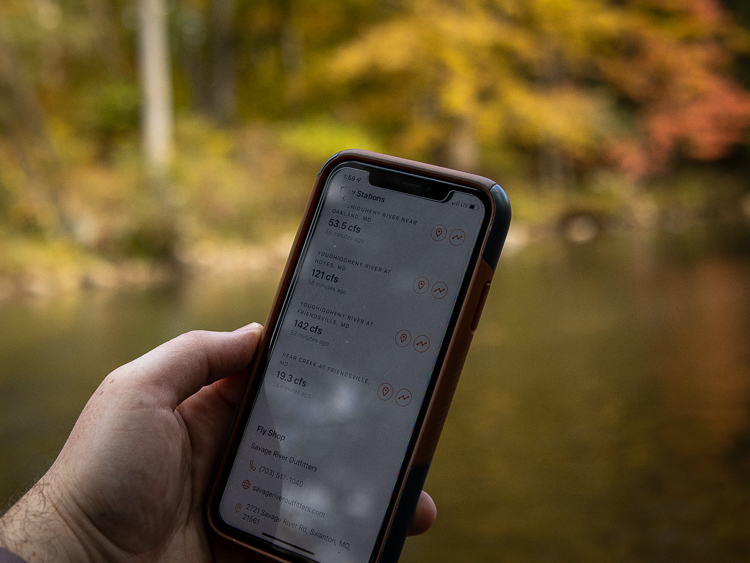
An anglers stops to check the latest streamflows
Fall is the best season to fish for many anglers. It allows you to get aggressive, and hunt fish who are hungrier than ever. We all go a little dormant when the weather gets cold and the days get short. Fish are no different, so hit the water before the last leaves drop, and winter sets in.
With these three top tips to help you fish this fall, you may just hook into a fish that is the envy of most angler’s dreams.
